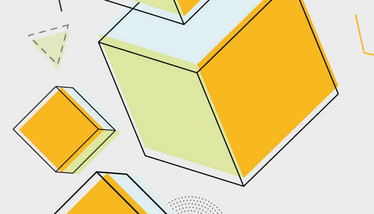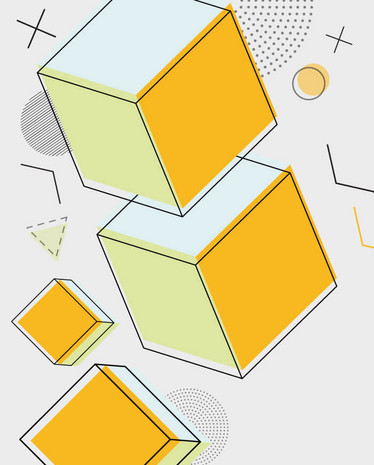
Judging the New Kid on the Block
Can blockchain truly make a difference? Or is the novelty of the ledger technology its main selling point?
Pasi Kemppainen | | Longer Read

Pasi Kemppainen, Management Advisor, Global Serialization and Traceability at Santen Pharmaceutical.
A new era in supply chain compliance is being embraced by the pharmaceutical industry. The implementation of the requirements of both the EU Falsified Medicines Directive (FMD) and Drug Supply Chain Security Act (DSCSA) have made companies on both sides of the Atlantic turn to serialization systems and other digital technologies to improve the efficiency and transparency of their supply chain management. In many cases, companies are using Level Four and Five serialization systems. Level Four is an enterprise system and Level Five is a network system, such as a global network enabling the management of all serialization and regulatory data with partners, customers and regulatory authorities. Both types of solutions – as well as other options – are widely available from serialization solution vendors.
But now it seems there is a new technology that may go above and beyond a network system: blockchain. While some pharma companies are keenly researching and investing in the technology, others are questioning whether blockchain is just an on-trend talking point with little value. The debate is complicated by the fact that many within the industry aren’t exactly sure what blockchain means. Simply put, blockchain is a decentralized digital ledger that can be used to record transactions across different computers. It is made up of a list of cryptographically secure “blocks” of data. What sets the technology apart from other ledger and database technologies is its capacity for data management and distribution within a network. Once something is recorded in the ledger it cannot be edited, altered or removed. In other words: it’s a single source of truth for parties who find themselves unable to trust the integrity of data or each other.
For pharma, blockchain could help prevent the sale and distribution of counterfeit medicines and medical devices, and improve the transparency and traceability of clinical trials. Others in the industry are also exploring the potential of blockchain to help with recalls or compliance. In many ways, blockchain is a truly fascinating concept backed up by a complex mathematical model.
When examined more closely, however, I believe that the technology may not have the capacity to live up to the expectations the pharmaceutical industry has of it.

(Not) on the same page
The beauty of blockchain is that it is an immutable and secure ledger technology. Tamper-proof and fully distributed in nature, its appeal lies in the fact that centralized controlling parties can potentially be done away with. Though these qualities are desirable, the ability of blockchain to work for pharmaceutical companies may be limited due to the general lack of interest of the industry for technology standards and shared data. Pharma companies are notorious for keeping their cards close to their chests; information sharing is seemingly a painful process for some! In other industries, the willingness to share data has contributed to success. Take telecoms for example; 5G is a global standard already rolled out in major markets across the world, marking the start of a faster, more innovative era in mobile networking. This couldn’t have happened without the desire of various groups and companies to work within industry standards and share useful data. Nokia, Huawei and Ericson are all competitors, but as 5G has now been introduced, it will be available on all of these companies’ platforms and devices. The pharma industry is very different. The IT solutions that pharma relies on are highly company specific with very little industry collaboration and standardization.
In addition, a lingua franca is essential for the growth of blockchain, particularly when it comes to interoperability (the ability of computers or devices to share and make use of data) and integration. Because blockchain is still relatively new to the pharmaceutical industry, many vendor companies and start-ups are taking a stab at developing their own solutions in an attempt to be the first to market. But as the implementation of blockchain is highly vendor specific in pharma, it will inevitably lead to data discrepancies between companies as the type of data one company holds won’t necessarily match anyone else’s. To help illustrate the issue further, take the example of cryptocurrency platforms Bitcoin and Ethereum. They both rely on blockchain to work, but they don’t operate in the same “language” so information sharing across the two platforms is difficult. Therefore, technology agnostic data standards like GS1 EPCIS are even more relevant for the pharma industry than blockchain itself. DSCSA standards call for the “interoperable exchange of data” and I expect the biggest challenge will be how data semantics are addressed by blockchain solutions rather than data sharing.
In the EU, there is also GDPR – the General Data Protection Regulation – to consider. GDPR Article 17 states that “the data subject shall have the right to obtain from the controller the erasure of personal data concerning him or her without undue delay and the controller shall have the obligation to erase personal data without undue delay.” As blockchain platforms are inherently non-reversible, their use is a source of contention in terms of data protection.
For companies looking to develop their own blockchain solutions, considerations must be made during the early stages of development as to how to navigate this issue and possibly correct or omit entries. But the question arises of how the authenticity of records will be maintained if such alterations are permitted or required. Companies will have to work to address conflicts with European law to gain and maintain the public’s trust – (and many members of the public already view the data collection with an air of scepticism).
Another inherent problem with blockchain is the fact that it is a slow and costly platform by design with large data sets and number of users. The technology relies on a transaction consensus mechanism (protocols that ensure that all the devices reliant on the technology are synchronized with each other and agree which decisions are legitimate and, therefore, safe to be added to the blockchain), which prevents it from truly being applicable to real-time performance management. Though there are proprietary blockchain solutions to overcome these problems, they are controlled by private companies or consortiums, locked in by the respective proprietary rights that, again, contradict blockchain interoperability, data semantics and platform openness. Effectively, these options aren’t able to cut to the heart of issue and provide meaningful solutions.
Complete Visibility
Blockchain was thrust into the spotlight as the underpinning technology behind cryptocurrency. Since then it has been positioned as a general-purpose solution for many problems that some would argue, it is not necessarily suited for.
“Blockchain is best suited for applications that have a need for complete visibility into transactional data for all participants, immutability, and non-repudiation,” explains John Hogan, Senior Vice President of Engineering, TraceLink. “In a nutshell, it is perfect for parties that don’t know or trust each other!”
There are a handful of use cases in the pharmaceutical supply chain that may be good candidates for blockchain technology. For example, the FDA is working with various partners, including UCLA Health, IBM, KPMG, Merck Sharp & Dohme, Walmart, and TraceLink on various blockchain and distributed ledger projects to support the track and trace of drugs and/or digital recalls. Some of these pilots demonstrate a novel use case for blockchain given the highly sensitive transactional data that is shared about medications making their way up and down the pharma supply chain, which helps to ensure there is a carefully tracked and encrypted record affirming every medication bottle’s integrity and pedigree.
“Given the specific benefits and costs of blockchain, it is best to carefully consider the most applicable use cases for your company’s specific business objectives before jumping on the blockchain bandwagon,” Hogan says.

Beyond the buzz
In many cases solutions already exist to tackle some of the issues that blockchain is being hyped to address – consider saleable returns – something that many have cited blockchain could help with. Saleable returns allow for verified products to be resold by wholesalers when they are returned by pharmacies. Historically, regulators have played a limited role in the process but by November 27, 2019, all wholesalers in the US will be required to verify Global Trade Item Numbers or GTIN (an identifier developed by GS1, a not-for-profit organization that creates standards on barcodes), serial numbers, lot numbers and expiry dates for their products. Failure to comply with these standards could have knock on effects for other areas of the supply chain, preventing manufacturers from adequately planning for demand – and potentially resulting in drug shortages. Currently, wholesale returns account for approximately two percent of overall sales, which, depending on the size of a company could account for a significant number of items for which a verification is required.
Verification Router Services (VRS) have been recommended to the industry as options for dealing with the demands of the Saleable Returns Act. These interoperable systems are used by companies to manage myriad requests to and responses for acceptance, formatting and delivery. In other words, VRS are like directories where GTIN is used to broker requests between appropriate parties. But some in the industry view blockchain as the best long-term solution for VRS, not considering the long-term challenges that will have to be overcome for the ledger technology to have the impact that is needed.
There are many established product information management systems and partner collaboration platforms that allow for the quick distribution and consumption of product master data, as well as the opportunity for downstream trading between industry partners. These proven systems and platforms are not inhibited by issues of performance, governance or personal data handling. I think there is little sense in moving to the uncertainty that implementing myriad blockchain solutions can introduce, especially in the use case of saleable returns.
However, in other areas, there are potential benefits, especially for less developed pharmaceutical markets in creating large scale serialization and traceability ecosystems. While blockchain has yet to demonstrate its disruptive capacity in advanced markets, its potential to add value to the supply chains of emerging economies is high. As many countries that fall into this bracket lack their own serialization and traceability ecosystems and models, there is huge potential for them to adopt existing ecosystem models like the EU’s EMVS (European Medicines Verification System) or the US’ DSCSA. Government coordinated blockchain could be an alternative means to facilitate the adoption of these large scale serialization and traceability models and give them the competitive lever to help transform their markets’ structures and improve supply chain integrity thus increasing patient safety. In doing so, emerging economies could enforce one blockchain standard verification and traceability platform, cut their implementation times, improve the solution outreach and reporting capabilities and also accelerate their compliance with global standards.
Blockchain is a huge buzzword right now because it promises a fascinating and novel solution for complex problems – and certainly there are some advantages – but I do not believe it is a best of breed solution to the serialization and traceability issues faced by the pharmaceutical industry at large. In many cases, existing cloud-based systems are more than adequate to meet the needs of FMD and DSCSA. When thinking of applying blockchain, ask first if blockchain really delivers any tangible advantages over existing solutions, and if so, what are the tradeoffs you will be facing in implementing and maintaining it in the long run.
Serialization Under the Lens
Compliance with serialization legislature has become an industry imperative with pharmaceutical companies in both developed and emerging economies keen to create and adopt serialization models to keep counterfeiters at bay and better protect patients. But while serialization is often talked about in relation to preventing drug counterfeiting, it is certainly more than a case of slapping barcodes on drug products to protect against fakes. Rather, it is a means for improving the end-to-end visibility of the supply chain; breaking down the obstacles that prevent the easy recall of products; and facilitating the development of superior data-driven tools that are capable of predicting patient behaviour.
Drug Supply Chain Security Act (DSCSA)
First enacted in 2013, DSCSA outlines how interoperable systems should be developed to track and trace the distribution of Rx drugs in the US. By complying with the Act, the entire pharmaceutical supply chain will help support the FDA in protecting patients against counterfeit, contaminated and otherwise harmful drug products. By January of 2015, manufacturers were expected to have printed lot numbers for their prescription drug products in line with the first major deadline of the legislation.
Manufacturers were then expected to have all prescription drug products serialized and compliant with the FDA’s “Standardized Numerical Identification” guidance by November 2017. The guidance suggests that serial information is available in human and machine readable formats. Some, however, have struggled to comply with these standards; a general feeling of unpreparedness and a lack of qualified vendors have been significant stumbling blocks to progress.
Subsequent deadlines have seen repackagers called to serialize repackaged medicines and, over the course of the next four years, drug products will also need to be authenticated and verified by wholesalers (November 2019) and dispensers (November 2020). In 2023, the whole supply chain will be expected to achieve traceability and make use of interoperable systems.
EU FMD
The Falsified Medicines Directive was first introduced in July 2011 by the European Council and European Parliament. The legal framework aims to protect European citizens against the threat of counterfeit medicines and assure that drug products have been checked and verified for quality safety and efficacy.
In the years since it was first introduced, professionals throughout the supply chain have adopted new practices to comply with the directive. In June of 2013 EU member states were expected to ensure that all active substances imported from outside of the EU were accompanied by a written confirmation from the country of origin. By June 2014, online retailers were expected to begin using an obligatory logo introduced by the Directive, indicating their legitimacy as a legally operating pharmacy or retailer. Members were given until June 2015 to prepare for its application.
In February 2019, marketing authorized holders had to place a 2D barcode and an anti-tampering device on the majority of prescription medications and some over-the-counter products.
Management Advisor, Global Serialization and Traceability, Santen Pharmaceutical.



















